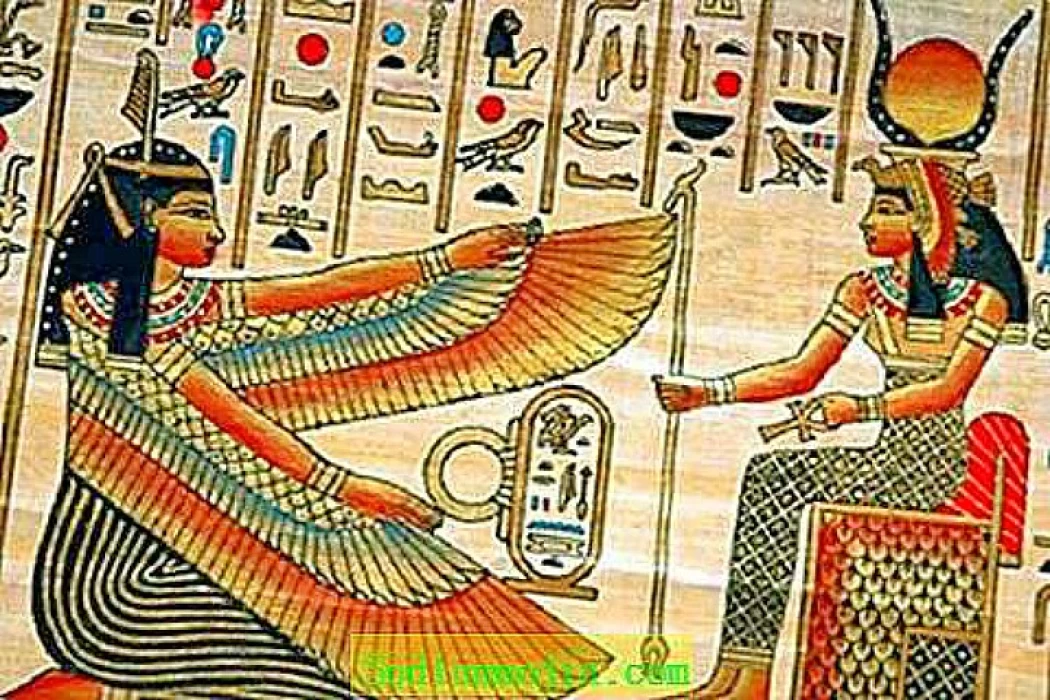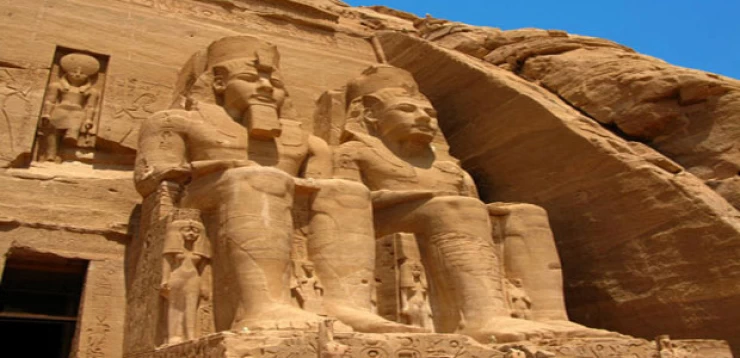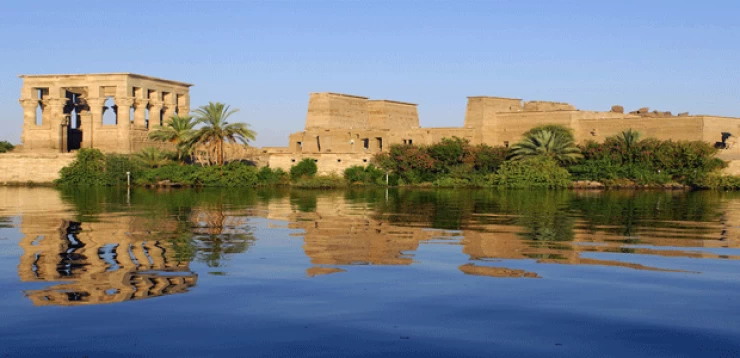
The Egyptian goddess Isis
Isis was one of the most famous goddesses in Egyptian history. It was believed that Isis was guiding the dead to the afterlife, as she helped Osiris. She was considered the divine mother of the pharaoh, who was likened to her son Horus. Her maternal assistance was represented in the healing of common people from any pain or diseases. Besides, in the "Pyramid Texts", Isis is mentioned for the first time in history, in what is known as funerary texts of the pyramids. She is mentioned for being obedient to her husband, and a caring mother. Come to Egypt and seize the opportunity to discover the wonderous pyramids and choose another tour from Cairo Day Tours to have an exceptional vacation.
Upper Egypt, especially Aswan includes many temples of Isis such as the Temple of Abydos located between the cities of Girga and Nag Hammadi. It is the oldest temple of Isis, as it was built before the construction of the pyramids. It is believed that it contains the burial place of Osiris, as well as the Temple of Qift and the famous Temple of Philae-on-Philae Island, you can discover these beautiful and gorgeous temples during your Nile Cruise Tours or through a Tours of Aswan Day Tours to learn more and more about the goddess Isis. Contact Cairo Top Tours and tailor your itinerary or choose from Egypt Classic Tours itineraries according to your preferences.
Let’s discover how the worshipping of Isis spread out in the whole world. The Egyptian sailors traveled across the Mediterranean to trade, carrying with them rituals and beliefs in Isis: They transferred their knowledge and rituals to the European world. Isis was the perfect goddess, as it displays a perfect picture of the charming woman, the faithful wife, and the nurturing mother.
Moreover, Isis worshipping spread out not only in the Middle East, but also in ancient London, where relics belonging to a temple dedicated to the goddess Isis were found, making London the only British city to prove the existence of Isis, and there are other cities in France and Germany where similar artifacts were found. Explore the Egyptian temples of Isis during your vacation in Egypt Easter Tours with our professional team.
Isis is the heroine of a legend that originated in ancient Egypt, and her influence extended to different parts of the world, from thousands of years until the present time, transcending her original religious character, to be manifested in the arts and literature in various cultures, including Arab culture.
Goddess Isis is one of the greatest Egyptian goddesses. She was the wife and the semi-sister of Osiris. They had a son named Horus. Isis was the goddess of life and magic, so she was able to shield women and children. She also helped sick people by healing them from their sicknesses. Her symbols were the ankh, her wings, and her throne headdress.
Egyptian gods and goddesses usually started in one place. They had their own cities where they were venerated throughout the ages. It was popular in ancient Egypt that the wife could be the sister of the king because they preferred that the queen come from the royal family. The city or the town of Isis's worship was not found throughout early history. Because there were no known temples for her.
Especially the legend of the faithful wife of the Lord of the underworld in ancient Egypt (Osiris), Goddess Isis, and her famous son Horus, who took revenge for his father's pathetic murder by the evil god of the desert and the foreign lands.
You can see the whole story and the myth of Isis and Osiris depicted on the walls of the ancient temples of Egypt, like the Edfu Temple and Philae Temple in Aswan.
Worshiping Isis in certain temples did not start until the end of the 30th dynasty. Before that, people were worshipping Isis in other gods' temples during the Middle Kingdom and the New Kingdom of ancient Egyptian history. In the 30th dynasty, people worshipped Isis with her husband Osiris and her son Horus.
In the Roman age, temples of Isis became more popular. One of them is known as the Temple of Philae. Years after years, Isis's temples were so famous that they deployed abroad, and her followers transferred the venerating of Isis to the Semitic goddess Astarte because of the similarity of names. In the Hellenistic era, she also became the goddess who protected sailors. Once you are in Egypt, Cairo Top Tours will take care of it through our highly qualified guides specialized in Egyptology to make your visit to the land of the Pharaohs a success.
The mother occupied a great position that was embodied in all aspects of life, from family and society to religion, art and literature.
The goddess Isis represents the most famous image of motherhood in ancient Egypt, embodying the example of a protective and sacrificial mother... Isis appears in most inscriptions carrying or breastfeeding her child Horus, reflecting the mother's role in protecting and caring for her children.
Goddess Isis is one of the most revered and powerful deities in ancient Egyptian mythology. Known as the goddess of life, magic, and healing, Isis played a crucial role in protecting women, children, and the sick. She was both the wife and the semi-sister of Osiris, the god of the underworld, and together they had a son, Horus. Isis' divine attributes were represented through her symbols: the ankh (a sign of life), her majestic wings, and the throne headdress that signified her royal status.
Isis was believed to guide the dead to the afterlife and helped Osiris, and was considered the divine mother of the pharaoh as he was likened to her son Horus. Her maternal assistance was represented by a healing spell to help the common people.
Egyptian gods and goddesses often had specific cities where they were venerated. However, in the early stages of Egyptian history, there were no dedicated temples for Isis. Instead, she was worshipped within the sanctuaries of other gods. It wasn’t until the 30th Dynasty that her cult gained widespread recognition, and dedicated temples were built in her honor.
Her worship continued on Philae Island in Aswan until the 6th century AD, long after the Egyptian and Roman eras had ended, a testament to her importance and presence.
Over the centuries, Philae gained a special status in worship, to the point that crowds of followers of the cult would gather to relive the story of the death and resurrection of Osiris.
During the Middle and New Kingdoms, worshippers honored Isis alongside Osiris and Horus, forming a sacred trinity. As her influence grew, her worship extended beyond Egypt, spreading to regions such as Rome, Greece, and even parts of Asia. The cult of Isis became so widespread that her veneration was later associated with the Semitic goddess Astarte, due to the similarities in their names.
One of the most compelling myths in Egyptian history is the story of Isis and Osiris. Osiris, the ruler of Egypt, was treacherously murdered by his jealous brother, Set, who dismembered his body and scattered the pieces across the land. In her devotion, Isis tirelessly searched for Osiris’ remains, reassembling them with her divine magic and resurrecting him long enough to conceive their son, Horus.
Horus later avenged his father’s murder by defeating Set, restoring justice and order. This legend, deeply rooted in themes of loyalty, resurrection, and the eternal struggle between good and evil, can be found inscribed on the walls of temples such as Edfu and Philae in Aswan.
















